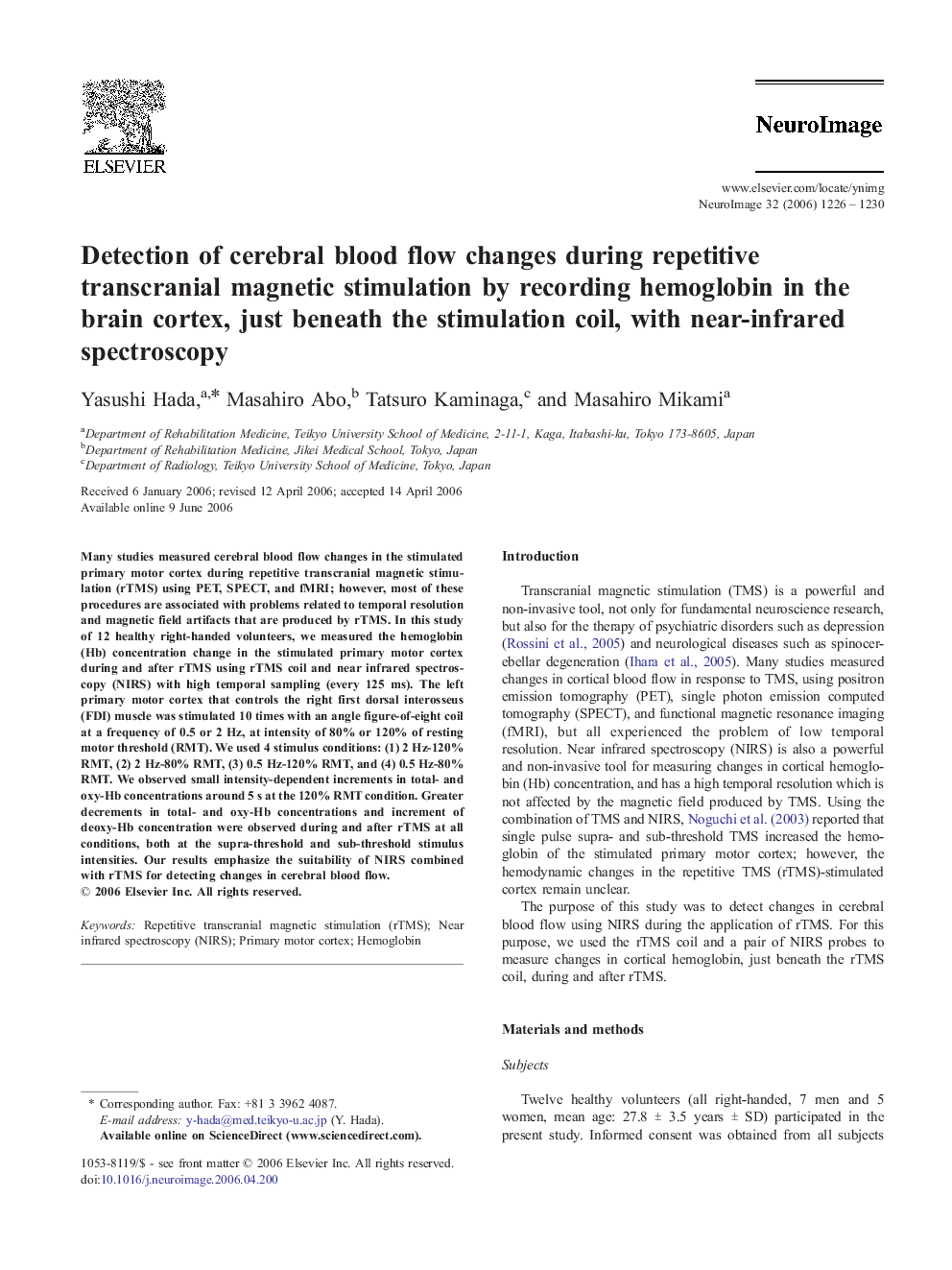| Article ID | Journal | Published Year | Pages | File Type |
|---|---|---|---|---|
| 3074551 | NeuroImage | 2006 | 5 Pages |
Many studies measured cerebral blood flow changes in the stimulated primary motor cortex during repetitive transcranial magnetic stimulation (rTMS) using PET, SPECT, and fMRI; however, most of these procedures are associated with problems related to temporal resolution and magnetic field artifacts that are produced by rTMS. In this study of 12 healthy right-handed volunteers, we measured the hemoglobin (Hb) concentration change in the stimulated primary motor cortex during and after rTMS using rTMS coil and near infrared spectroscopy (NIRS) with high temporal sampling (every 125 ms). The left primary motor cortex that controls the right first dorsal interosseus (FDI) muscle was stimulated 10 times with an angle figure-of-eight coil at a frequency of 0.5 or 2 Hz, at intensity of 80% or 120% of resting motor threshold (RMT). We used 4 stimulus conditions: (1) 2 Hz-120% RMT, (2) 2 Hz-80% RMT, (3) 0.5 Hz-120% RMT, and (4) 0.5 Hz-80% RMT. We observed small intensity-dependent increments in total- and oxy-Hb concentrations around 5 s at the 120% RMT condition. Greater decrements in total- and oxy-Hb concentrations and increment of deoxy-Hb concentration were observed during and after rTMS at all conditions, both at the supra-threshold and sub-threshold stimulus intensities. Our results emphasize the suitability of NIRS combined with rTMS for detecting changes in cerebral blood flow.
